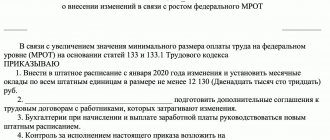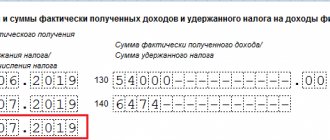What is the point of bonuses?
The key goal of bonuses is to stimulate the interest of employees to perform assigned tasks efficiently and promptly, maintain labor discipline, and fulfill plans.
Even within one organization, it is possible to provide several types of bonuses at once. The incentive is established based on the results of work over a certain period of time:
- monthly;
- quarterly;
- once every six months;
- at the end of the year;
- seasonal;
- at the end of the reporting company;
- based on the results of the project;
- other.
The most common type is payment based on quarterly performance results. What is a quarterly bonus? In essence, this is the same incentive payment for conscientious work, only calculated based on the results of work for three reporting months. Maximum - four times a year. But the employer has the right to provide additional types of payments in addition to quarterly amounts. For example, at the end of the year, it is allowed to pay two types of incentives at once: based on the results of work for the 4th quarter and the final one for the entire year, even though the employee already received quarterly money during the reporting year.
There are a lot of nuances in calculating bonuses. The key rules are set by the employer. Let's figure out how to calculate the quarterly bonus using specific examples.
https://youtu.be/OTu_RctwWpM
Where does it apply?
The quarterly bonus needs to be understood that, first of all, this is a type of income for an individual, akin to wages. However, there are nuances that differ from salary:
- the employer establishes certain conditions, upon fulfillment of which it can be accrued;
- the format in which the payment will be accrued is decided solely by the employer. According to the law, it can be accrued in the form of: a certain percentage of the salary (a number of calculations are made, the basis for which is the size of the salary for the last 3 months);
- fixed amount (accrued using an order);
It is necessary to remember that there are categories of citizens who are not entitled to quarterly remuneration. These include:
- employees on parental leave for the entire 3-month period. In cases where the employee was on vacation for only part of the quarter, recalculation is necessary;
- employees who were subject to disciplinary sanctions for a specific reporting period.
The employer cannot deprive employees of bonuses at their own discretion. There must be a legal basis for this.
Reason for appointment
The basis for a bonus is an event or a set of certain factors, upon the occurrence or fulfillment of which the employee is entitled to an incentive bonus in the form of a bonus. The list of grounds for bonuses is determined solely by the employer. The decision will have to be enshrined in local regulations for the organization, otherwise problems with the State Labor Inspectorate and disputes with employees cannot be avoided.
Set the grounds for assigning bonuses:
- in the employment contract with the employee;
- in a collective agreement;
- in the wage situation;
- in a separate provision on bonuses;
- in the provision on employee incentives;
- at other disposal of management.
Please note that in addition to monetary incentives, other forms of incentives for conscientious work are provided for workers. For example, an employer has the right to express gratitude or award a distinguished employee with a valuable gift, a certificate of honor, or assign him an honorary title. For special labor services to society and the state, employees are nominated for state awards.
Recommendations for state employees
There is no special procedure for calculating the quarterly bonus in a budget organization. Issues in the area of remuneration for public sector employees are resolved by management independently, but taking into account the recommendations and standards communicated by the founders, higher ministries and departments.
The following grounds are possible for annual, monthly or quarterly bonuses for civil servants and other public sector employees:
- for conscientious performance of labor duties;
- for achieving certain labor indicators;
- in connection with anniversaries;
- in connection with professional holidays, etc.
Please note that for each reason you will have to describe in detail the events and indicators for bonuses. For example, to base an anniversary or holiday date, specific holidays and dates of events should be indicated. Otherwise, workers will demand money for every holiday on the calendar.
With regard to bonuses for achieving labor indicators or conscientious work, it is possible to develop a point system of criteria and factors. For each task completed or goal achieved, a point is awarded. At the end of the quarter, the total amount of accumulated points and their value are determined, depending on the wage fund.
Recommendations for commercial organizations
For commercial structures, bonus rates are somewhat different. Here the employer has the right to establish a direct link with the quantitative or qualitative indicators of the business:
- for quality indicators, for example, employees of the sales department, you can set a quarterly incentive for fulfilling the sales plan by 100% or more;
- for quality indicators, for example, employees of the accounting department and human resources department are often paid a monthly bonus for timely submission of reports, compliance with cash and contractual discipline, and successful completion of inspections.
It is important to describe the terms and principles of accrual in as much detail and clearly as possible. The more detailed the procedure for how the quarterly bonus is calculated, the fewer problems with calculations.
How to set bonus payment deadlines
Problems associated with the timing of bonus transfers arise for the same reason that there are difficulties with establishing the bonus system itself.
Namely, because of the dual nature of such payments. Let us recall that in the Labor Code of the Russian Federation the term “bonus” is used in two cases: when describing that part of the salary that relates to incentive payments (Article 129 of the Labor Code of the Russian Federation), and when describing the ways in which an employer has the right to reward employees for conscientious work (Article 191 of the Labor Code of the Russian Federation; for more details, see “We reward employees correctly: how to arrange bonuses in an organization”). At the same time, labor legislation establishes fairly strict rules for determining the timing of payment of wages (Article 136 of the Labor Code of the Russian Federation). Taken together, these norms of the Labor Code allow inspectors from the labor inspectorate to hold employers accountable for untimely transfer of bonus amounts to employees. This problem is especially acute when paying bonuses that are part of the salary. But you can avoid fines if you correctly draw up the relevant local acts (Regulations on remuneration, Regulations on bonuses, or Internal labor regulations). Before moving on to specific advice on the content of such documents, let us explain the essence of the problem.
So, Article 136 of the Labor Code of the Russian Federation regulates the procedure for paying wages and, in particular, the time frame within which the employer is obliged to give money to employees. This article determines that salaries must be paid at least every half month. The specific date of payment is prescribed in the internal labor regulations, collective or employment agreement, but cannot be set later than 15 calendar days from the end of the period for which the corresponding amount was accrued.
Calculate your advance and salary for free, taking into account all current indicators
It would seem that everything is simple: the period to which the bonus relates is known (usually such a period is equal to a month, quarter, six months or one year). This means that the bonus payment must be transferred no later than 15 calendar days from the end of the corresponding period. But in practice everything is much more complicated. After all, usually the basis for paying a bonus is the employee’s fulfillment of some indicators (sales plan, output, revenue, etc.). And it is not always enough for the employer to have 15 calendar days elapsed after the end of the relevant period to determine whether the employee has fulfilled these indicators. So, if we are talking about quarterly, semi-annual or annual bonuses, collecting the necessary information may require considerable time (in the case of annual bonuses, the New Year holidays also play a role). The indicated 15 days may not be enough to calculate a bonus, the payment of which is “tied” to general corporate indicators (company profitability, total sales, etc.), since to determine them you need to obtain information from all separate divisions of the company. As a result, the employer cannot comply with the requirement of Article 136 of the Labor Code of the Russian Federation when transferring bonus payments.
Officials of the Russian Ministry of Labor had to look for a way out of this legislative trap. In a letter dated 02.14.17 No. 14-1/OOG-1293, representatives of this department explained that the “15-day rule” is established exclusively for that part of the salary that is accrued to the employee for working hours worked in a specific period, fulfillment of labor standards (job duties) ). Incentive payments (additional payments and bonuses of an incentive nature, bonuses and other incentive payments), although they are a component of the salary, can be paid for longer periods than half a month (month, quarter, year, etc.). Therefore, the timing of the transfer of incentive payments to employees accrued for a month, quarter, year or other period can be established by a collective agreement or local regulations without taking into account the “15-day rule”. For more details, see “The Ministry of Labor reminded how quarterly and annual bonuses can be paid.”
Having understood the essence of the problem, let’s move on to practical advice on drawing up a local act of organization. First of all, we note that it must not only clearly define the terms of bonus payments (we talked about this in the previous article about bonuses), but also establish the period for which bonuses are awarded, as well as the period during which employees must actually receive what they are owed them money. At the same time, the employer has the right to set in a local act any terms convenient for him for the transfer of both bonuses that are part of the salary (this follows from the above explanations of the Ministry of Labor) and bonuses and incentives, which generally do not fall under the “15 day rule”. Thus, a bonus based on the results of work for the month, even if we are talking about a bonus that is part of the salary, does not have to be paid before the 15th of the next month. In the local act, you can set any other deadline for transferring money. For example, until the end of the next month, or until the 15th day of the first month of the next quarter.
Note that the timing of payment of bonuses and incentives is not regulated by the Labor Code at all. This means that the organization’s local act does not have to establish uniform deadlines for the transfer of bonuses. It is enough to specify each time the deadline and procedure for such payment in the relevant order of the head of the organization or his authorized person. However, we recommend that you still fix the terms for transferring one-time bonuses in a local act. This not only disciplines the employer, but also creates a sense of stability and confidence among employees that the assigned bonus will be paid.
Documenting
Fix the procedure for paying bonuses to employees in the local act of the organization. For example, develop a separate provision on bonuses for employees. Be sure to write down:
- how and when the right to receive a bonus arises;
- who evaluates the performance of a particular employee;
- how this result is recorded;
- who makes the final decision on payment;
- when quarterly bonuses are paid in the company.
After the conditions and procedure for bonuses are approved, the criteria and amounts are calculated, the employer issues an order for bonuses. To do this, use unified order forms. For example, to pay a bonus to one employee, fill out form No. T-11. For bonuses for several employees - form No. T-11a.
Answers to common questions about the quarterly bonus - how to calculate
Question No. 1: When should the quarterly bonus be paid if it is provided for accrual by the Regulations on Bonuses?
Answer: In any case, the quarterly bonus must be transferred to the employee simultaneously with the next salary.
Question No. 2: Should the quarterly bonus be taken into account when calculating an employee’s average earnings?
Answer: When calculating the amount of an employee’s average earnings, all bonuses accrued during the billing period, including the quarterly one, are taken into account.
Rate the quality of the article. Your opinion is important to us:
Entry of bonus in work book
All information about employee awards for labor successes is entered into the work book (Part 4 of Article 66 of the Labor Code of the Russian Federation). But there is no talk of assigning bonus payments. In the work book, enter only the following types of incentives for employees (clause 10 of the rules approved by Decree of the Government of the Russian Federation of April 16, 2003 No. 225):
- on the awarding of state awards, including the conferment of state honorary titles on the basis of relevant decrees and other decisions;
- awarding certificates of honor, conferring titles and awarding badges, badges, diplomas, certificates of honor by employers;
- other types of incentives provided for by the legislation of the Russian Federation, collective agreements, internal labor regulations, charters and regulations on discipline.
At the same time, entries about bonuses provided for by the current wage system or paid on a regular basis are not entered into work books (clause 25 of the rules).
According to Rostrud specialists, information about one-time bonuses, which are paid on the basis of an individual order of management, is entered into the work book. But information about bonuses provided for by local regulations establishing the remuneration system for the current employer should not be entered into the work book.
What is the annual bonus?
The annual bonus is an incentive monetary reward. It is paid to an employee by his employer at the end of the year for the conscientious performance of his job duties.
Quite often the annual bonus is called the “13th salary”.
This type of bonus does not fall into the mandatory category. Information regarding its payment must be reflected in regulatory documentation. Among these, the following papers should be highlighted:
- labor agreement;
- collective agreement;
- Regulations on remuneration (or bonuses);
- employer's order to pay an annual bonus.
The documents must contain detailed information regarding bonuses at the end of the year. How is the size of the premium calculated, what factors are taken into account when determining its size and other nuances related to this issue.
The decision to accrue an annual bonus to an employee’s account is made by the management of the enterprise. When determining the need to stimulate the activities of workers with money, the employer takes into account certain indicators by which he judges his labor success in general.
How to calculate the bonus amount
The algorithm for calculating bonuses is set by the employer on an individual basis. Premium calculation options:
- in absolute amount - the amount of payment is set at a fixed amount;
- in percentage or fractional terms - the bonus amount is calculated as a percentage or share of the established official salary, tariff rate, average salary and other indicators;
- for actual time worked - the amount of payment is recalculated depending on the amount of time worked in the billing quarter;
- according to a point system - the number of accumulated points is determined for the reporting period, then the cost of one point is multiplied by the total number of points for the employee;
- percentage of revenue, plan fulfilled, concluded contracts - relevant for trade organizations, for example, a quarterly bonus is established for an employee in the amount of 5% of the amount of concluded contracts;
- other ways.
conclusions
An annual bonus is a monetary remuneration paid by management to its employees based on the results of the calendar year they have worked. This type does not fall into the category of mandatory payments.
There are several technologies for calculating the amount of the bonus at the end of the year. Among the main ones are the following:
- in proportion to the time worked;
- as a percentage;
- in a fixed approved amount;
- in hard monetary terms (salary, several salaries, etc.).
The topic of annual bonus payment must be reflected in the documentation. It can be an employment contract concluded with each employee, a collective agreement, or a bonus regulation.
Payment of monetary remuneration must be made in a timely manner. The deadline for crediting money to the employee’s account is no later than the 15th day of the month following the accounting year.
Employees dismissed before the end of the year, if they meet the conditions for receiving an annual bonus, can also count on receiving it. In this situation, its size will be determined according to the amount of time worked by the worker.
Calculation examples
Let's look at the procedure for calculating bonuses using specific examples.
Example No. 1. How to calculate a quarterly bonus from an employee’s salary
An employee of Vesna LLC was awarded a bonus for the 2nd quarter of 2020 in the amount of 150% of the official salary. According to the staffing table, the salary is 50,000 rubles.
Calculation of bonus payment: 50,000 rubles. × 150% = 75,000 rubles.
Let’s assume that the employee’s bonus is set at 3/4 of the official salary.
Calculation: 50,000 rub. × 3/4 = 37,500 rubles.
Example No. 2. Example of calculating bonuses for actual time worked for the 1st quarter of 2020
Vesna LLC has a five-day work week. In the 1st quarter of 2020, the norm is 57 working days. The specialist was ill from March 16 to March 25, 2020, of which 8 working days. The amount of the bonus is determined in the amount of the official salary, taking into account the actual time worked. The salary was 85,500 rubles.
Calculation: 85,500 rubles / 57 days (work norm) × 49 days (57 days - 8 days is actually time worked) = 73,500 rubles.
Example No. 3. Percentage of revenue - an example of calculating a quarterly bonus for trade workers
TORG LLC has established that bonuses for the quarter are calculated as 10% of the revenue received by the company based on the results of the work of the sales agent. The company employs three sales representatives, their revenue for the 2nd quarter of 2020 was:
- Ivanov I.I. — 1,000,000 rubles;
- Petrov P.P. — 800,000 rubles;
- Sidorov S.S. — 900,000 rubles.
We calculate bonuses:
- Ivanov I.I. — 1,000,000 rub. × 10% = 100,000 rubles.
- Petrov P.P. — 800,000 rub. × 10% = 80,000 rubles.
- Sidorov S.S. — 900,000 rub. × 10% = 90,000 rubles.
How to calculate salary by salary
This is how the premium amount is found. The rest of the calculation is as usual. Example 3. Ivanov I.I. receives a salary of 10,000 (January, February, March) rubles per month.
He lives in the Chelyabinsk region, where the regional coefficient is set at 15%. Let's calculate the quarterly bonus, which amounted to 10% of earnings and earnings for April.
1.
We calculate the amount of earnings for the quarter. 10,000 + 10,000 + 10,000 = 30,000 2. We calculate the bonus 30,000 * 10% = 3,000 rubles. 3. Based on the results of the quarter, the bonus is usually issued in the month following the quarter - in April.
Then the earnings for April will be (10,000 + 3,000)*1.15 = 14950. 4. We calculate personal income tax 14950*13% = 1943.50 5. Earnings for April to be issued in person 14950-1943.5 = 13,006.50 rubles.
How to calculate vacation pay correctly and have time to relax. Go on vacation soon! To receive a free book, enter your information in the form below and click the “Get Book” button.
The legislation establishes samples of these orders: No. T-11 if the bonus will be paid to just one employee No. T-11a if the bonus is awarded to a group of different employees at once The employer can also use his own orders, in a local format
It is important to remember: it is mandatory to calculate and accrue this type of incentive payment if it is specified in the employment agreement. Often employers reflect the need to pay bonuses in such an agreement
Moreover, deprivation is possible only if this point is reflected in the contract. Otherwise it will be illegal. The procedure for calculating the bonus amount has some features and nuances. First of all, they are related precisely to the type of bonus accrued.
Definition
The procedure for financial incentives for employees at a company is determined by Article 129 of the Labor Code of Russia, which provides that the salary of a working person consists of an official salary, as well as mandatory allowances related to the performance of work activities. At the same time, as mentioned above, local legal acts may establish a fair and equal opportunity for employees to receive additional monetary remuneration.
In general, the law does not have a uniform definition of what a quarterly bonus is. Its action is not provided for by law, but is an incentive measure invented by employers to additionally stimulate employees at the enterprise.
A quarterly bonus can be called an additional money transfer in favor of employees that meets the following criteria:
- paid to all employees at once or only selectively;
- translated once every three months (once per quarter);
- Strict reasons for paying money have been established, which are related to encouraging and stimulating greater work efficiency.
There are no uniform requirements for the formula by which bonus remuneration will be calculated. But this formula should be the same for all employees, regardless of their position.
Also on the topic: Amount of scholarship in 2020, types and conditions for receiving
Reason for payment
Considering that the law does not establish a single definition of a quarterly bonus, it is unlikely to find a fixed list of grounds for its payment. Thus, bonuses are additional incentives that are provided to achieve the following goals:
- stimulating future performance;
- rewarding individuals who have shown good work performance in the past.
Cash support can only be paid at the end of the quarter, that is, every three months of work.
Order form for rewarding an employee









